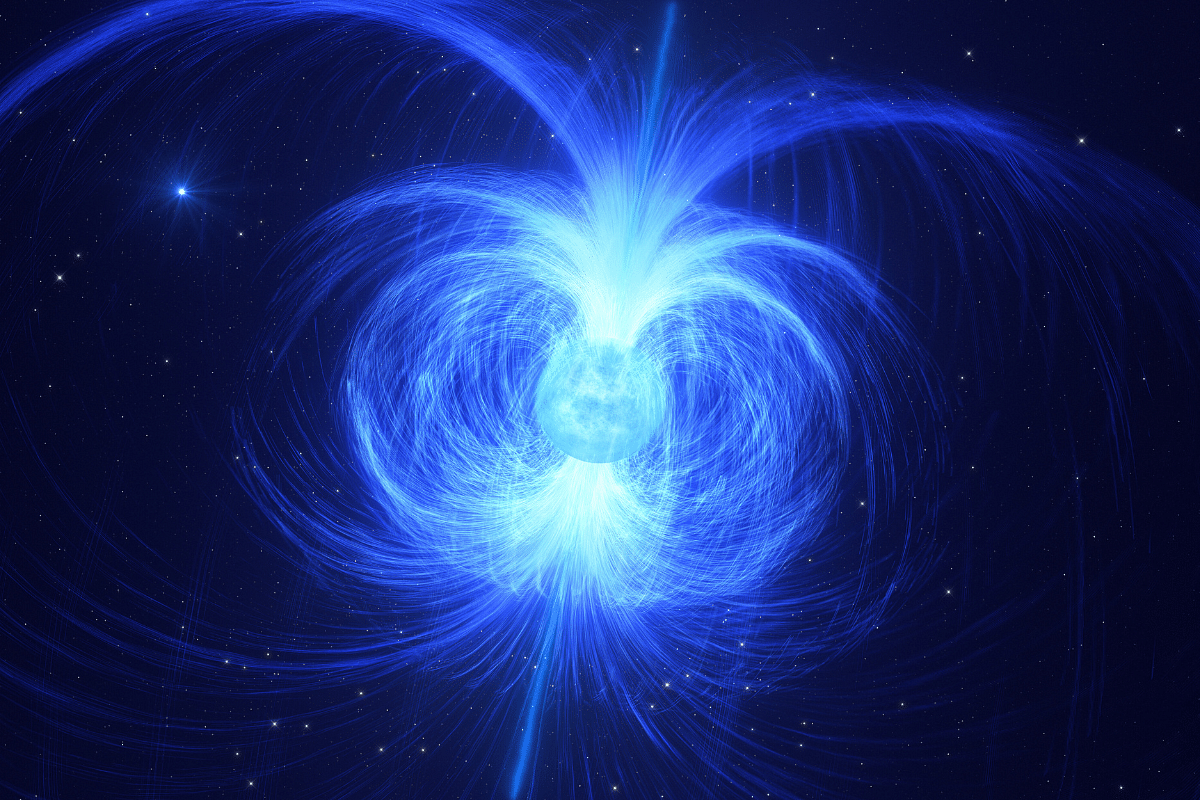Science
Astronomers Discover New Type Of Star; It Can Also Help Uncover The Mystery Of Magnetar Origins
- Recent astronomical observations have led to the discovery of a living star that is likely to become a magnetar.
- The research reveals a new type of astronomical object called massive magnetic helium stars.
- Learning about it can also help us know more about the origins of magnetars.

Artist’s impression of HD 45166, the star that might become a magnetar (Image: ESO/L. Calçada)
In a highly exciting development, astronomers have discovered a new type of astronomical object.
For over a century, the star HD 45166 has intrigued researchers due to its enigmatic nature.
Conventional models have struggled to explain its characteristics, and little was known about the star apart from the fact that it is one of a pair of stars, rich in helium, and several times more massive than our Sun.
Now, the mystery is unlocked, and a study on this object has appeared in Science journal. The new research marks the discovery of the very first massive magnetic helium star.
While researching HD 45166, the study's authors jokingly referred to the star as the "zombie star," not only because of its uniqueness but also because it would apparently turn lead author Tomer Shenar, an astronomer at the University of Amsterdam, Netherlands, into a "zombie," as revealed by co-author and European Southern Observatory (ESO) astronomer Julia Bodensteiner in an ESO release.
Shenar, having previously studied similar helium-rich stars, suspected that magnetic fields could hold the key to understanding HD 45166.
Magnetic fields have a known influence on the behaviour of stars and could potentially explain why traditional models failed to describe this particular star, which is located approximately 3000 light-years away in the constellation Monoceros.
Shenar and his team embarked on a study of the star using various facilities. The primary observations were conducted in February 2022 using a magnetic field-detecting instrument on the Canada-France-Hawaii Telescope.
The team also relied on important archive data collected with the Fiber-fed Extended Range Optical Spectrograph (FEROS) at ESO's La Silla Observatory in Chile.
After the observations were made, Shenar enlisted the expertise of co-author Gregg Wade, a specialist in magnetic fields in stars at the Royal Military College of Canada, to analyse the data.
Wade's response confirmed Shenar's suspicion: "Well my friend, whatever this thing is — it is definitely magnetic."
The star was found to possess an incredibly strong magnetic field, measuring 43,000 gauss. This makes HD 45166 the most magnetic massive star found thus far.
And thus was discovered the very first massive magnetic helium star.
The entire surface of the helium star has a magnetic field nearly 100,000 times stronger than that of Earth, said co-author Pablo Marchant, an astronomer at KU Leuven's Institute of Astronomy in Belgium, in the ESO release.
According to the team's research, HD 45166 was formed through the merger of two smaller stars that were rich in helium.
Learning about HD 45166 also provides valuable insights into the origin of magnetars, which are compact dead stars with incredibly strong magnetic fields.
While magnetars can be found throughout our galaxy, scientists have been uncertain about how they form.
The calculations conducted by the team indicate that HD 45166 will eventually transform into a magnetar as it undergoes gravitational collapse.
This collapse will cause the star's magnetic field to intensify, resulting in the formation of a highly compact core with a magnetic field strength of approximately 100 trillion gauss, making the star the most powerful type of magnet in the entire universe.
Support Swarajya's 50 Ground Reports Project & Sponsor A Story
Every general election Swarajya does a 50 ground reports project.
Aimed only at serious readers and those who appreciate the nuances of political undercurrents, the project provides a sense of India's electoral landscape. As you know, these reports are produced after considerable investment of travel, time and effort on the ground.
This time too we've kicked off the project in style and have covered over 30 constituencies already. If you're someone who appreciates such work and have enjoyed our coverage please consider sponsoring a ground report for just Rs 2999 to Rs 19,999 - it goes a long way in helping us produce more quality reportage.
You can also back this project by becoming a subscriber for as little as Rs 999 - so do click on this links and choose a plan that suits you and back us.
Click below to contribute.
Latest